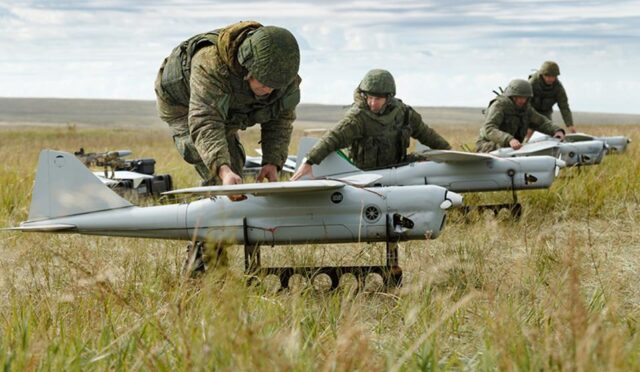V-BAT Drone: Enhancing Ukrainian Military Capabilities
In a significant development for Ukraine’s military efforts, US aerospace firm Shield AI has commenced training Ukrainian personnel on its V-BAT drone, which is designed to endure Russian electronic warfare tactics. This vertical take-off and landing drone has been actively supporting Ukrainian forces since August of last year, providing crucial intelligence, surveillance, reconnaissance, and targeting capabilities.
To strengthen its operational presence in the region, Shield AI has established an office in Kyiv, where a dedicated team of engineers and mission operations specialists are based. This team works closely with Ukraine’s Unmanned Systems Forces, the world’s first military unit exclusively focused on unmanned platforms across diverse domains, including air, land, surface, and underwater.
Strategic Enhancements in Military Operations
A senior commander from Ukraine’s Unmanned Systems Forces Training Group highlighted the importance of Shield AI’s presence, stating, “The presence of Shield AI’s team in Ukraine is a critical step in enhancing our operational capabilities. Their efforts ensure that our forces are well-equipped to tackle the challenges of the frontline environment.” This collaboration aims to elevate the effectiveness of Ukraine’s military strategies in an increasingly complex battlefield.
The V-BAT drone is equipped with advanced features, including a navigation system that operates independently of GPS, ensuring reliability in electronic warfare scenarios. With a remarkable endurance of up to 10 hours and a range of 300 miles (483 kilometers), the V-BAT is well-suited for extended missions. In a notable operation last August, the drone successfully flew 140 kilometers (87 miles) over the frontline, identifying a Russian missile battery and relaying targeting data back to the M142 High Mobility Artillery Rocket System (HiMARS), all while under jamming conditions.
Versatility Across Multiple Environments
Demonstrating its adaptability, the V-BAT has also been deployed for maritime operations in the Black Sea, highlighting its versatility across various combat environments. While Ukraine does possess some drones capable of withstanding electronic warfare, they typically lack the ability to transmit targeting data for effective kinetic responses. The V-BAT, weighing 125 pounds (57 kilograms), is equipped with sensors comparable to those found on manned aircraft, making it a formidable asset in modern warfare.
Moreover, the V-BAT can be easily transported on a small truck for rapid deployment and does not require a runway for takeoff or landing, allowing it to launch vertically from almost any surface. This feature makes it particularly advantageous in conflict situations where traditional airstrips may be compromised.
Cost-Effective and Strategic Warfare Solutions
Brandon Tseng, the President and Co-Founder of Shield AI, emphasized the strategic advantages of the V-BAT, stating, “V-BAT is the most cost-effective, strategic targeting drone available. It doesn’t require a runway, which as we know are large, stationary targets that will be destroyed on the first day of any conflict.” This perspective underscores the need for innovative military solutions that can withstand modern warfare challenges.
Tseng further asserted, “Drones are not the future of warfare; they are how warfare is conducted today. The reality is that much of the world is lagging behind, still channeling resources into outdated, vulnerable systems that are ineffective on the battlefield.” His comments draw attention to the pressing need for military modernization in the face of evolving combat scenarios, where traditional systems may no longer suffice.







